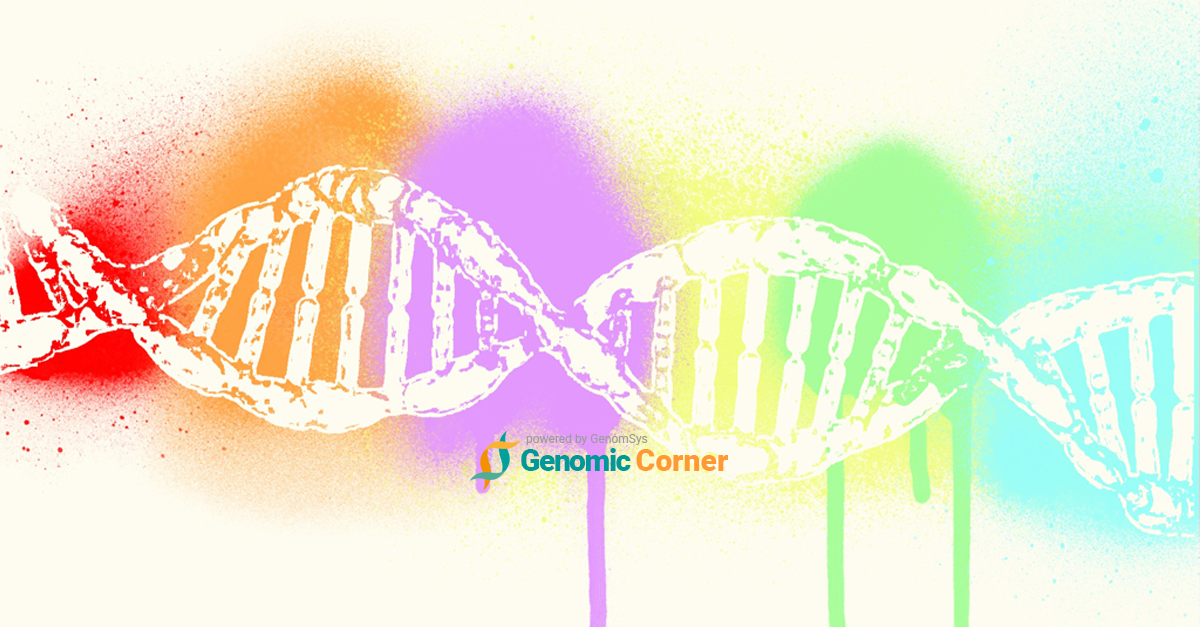Technological advances in genetics have revolutionized patient care and the impact of next-generation sequencing (NGS) on diagnostics, prevention, and therapeutics of rare disorders and cancer is now in plain sight. One of the most widespread and successful applications is sequencing the genome’s coding region, i.e., Whole-exome sequencing (WES). Particularly cost-effective, WES is commonly employed as a first-line diagnostic tool for the investigation of many different rare diseases (1).
Rare diseases represent a significant burden on public health and society, altogether afflicting millions of people with severe and persistent symptoms. Besides, the rareness of many of these conditions poses specific challenges to clinical management, as the scant knowledge and lack of resources strongly impair the capabilities of the healthcare system to recognize and aid the patients properly.
Identifying disease-causing variants can provide support for clinical management of rare diseases, and ‘Genotype-first’ approaches like WES are a powerful resource even in the absence of solid clinical suspicions, in the presence of atypical manifestations, or within the occurrence of novel disease-causing variants (2).
A good showcase of WES utility in rare conditions is particularly the field of nephrology. Over the years, the adoption of WES in the diagnostic process of chronic kidney diseases (CKD) led to a broader comprehension of these heterogeneous conditions affecting our kidneys, and led to promising treatments.
What are kidney diseases?
One of the primary functions of our kidneys is filtering the blood to remove wastes and extra water, which become urine. Damages in the kidneys can impair the filtering process causing wastes to accumulate in the body, potentially resulting in harmful situations (3). Chronic kidney disease consists of permanent kidney damage that can deteriorate throughout life, representing a compelling cause of morbidity and mortality. When the kidneys’ function is too impaired, it might result in kidney failure or end-stage renal disease (ESRD), making it impossible to survive without dialysis or a kidney transplant (4, 5).
CDK are complex and heterogeneous diseases, with contributions from both genomic and environmental factors. Increasing in prevalence and estimated by 2040 to account for the fifth leading cause of death, CDK is now a major global health problem. This growing burden is partly driven by the progressive aging of the population, as CKD is more common in older persons, and partly by the increasing prevalence of diabetes and hypertension, which are common risk factors for kidney damage (6, 7). The genetic contribution in CDK is evident from the considerable fraction of patients with inherited forms, many of them reporting positive family history in either a first- or second-degree relative. Additionally, having a first-degree relative with ESRD increased the risk (~7-fold) of developing kidney failure (8).
How can genetics help with kidney diseases?
Recently it has been possible to shed light on the genetic landscape of CKD in children, unraveling a single-gene disease-causing mutation in up to 20% of young CKD patients (developing it before 25 years). CKD can have different causes in children and adult patients. Prompt diagnosis is crucial for taking action in the early clinical stage and contrasting disease progression, improving patients’ quality of life. Moreover, establishing a molecular genetic diagnosis is particularly relevant in the renal transplant population (4).
Despite the heterogeneity and complexity of CKDWES is proving highly effective for deciphering the genetic causes of kidney diseases in varied patient cohorts, including patients without a known disease (9).
“Clinical exome sequencing and whole exome sequencing are becoming cost-effective tools, especially when applied in the early phases of the diagnostic flow of the patient, avoiding unnecessary or invasive exams, and rapidly providing a diagnosis,” says Tiziana Vaisitti, Associate Professor of Medical Genetics @ University of Torino.
Here we can see some recent progress in kidney disease diagnostic and comprehension:
A WES-based approach helped in ultra-rare genetic renal diseases, usually most prevalent in children, (i) easing up the diagnostic processes, and (ii) generating a better understanding of disease mechanisms, supporting tailored management strategies (10).
A study showed that ~10% of adults from a large cohort of patients with advanced CKD received a molecular diagnosis based on a WES-based approach, including cases of disorders of unknown origin. The increased comprehension of genomic bases was the starting point for (i) clinical disease reclassification, and (ii) wide extent of patients’ management (e.g., informed prognosis, family counseling, donor selection for transplantation, targeted therapies, inclusion in therapeutic trials) (1).
In another clinical cohort study, clinical exome sequencing (CES) was successful in providing a genetic diagnosis in patients with a clinical suspicion of monogenic CDK or without a well-defined diagnosis. CES is a subset of WES covering genes associated with human disease, and its application to kidney phenotypes proved highly effective if supported by careful candidate selection (8).
These promising results disclose a large potential for WES-based strategies to overcome the limits of traditional diagnostics, based on the “phenotype to genotype approach”. Time- and cost-effective, the clinical application of WES can boost the diagnostic yield in kidney disorders.
Achieving a diagnosis is crucial to (i) avoid unnecessary treatment, and (ii) support the best management strategies for the patient; therefore, WES-based approaches could find an essential role within the diagnostic flows of kidney disorders.
By Luca Trotta on July 27, 2022
[1] Geraghty R, Olinger E, Sayer JA. Whole exome sequencing of large populations: identification of loss of function alleles and implications for inherited kidney diseases. Kidney Int. 2021 Jun;99(6):1255-1259. doi: 10.1016/j.kint.2020.12.036. Epub 2021 Feb 5. PMID: 33549588.
[2] Luca Trotta; Genetics of Primary Immunodeficiency in Finland (2019). https://helda.helsinki.fi/handle/10138/278894
[3] National Institute of Diabetes and Digestive and Kidney Diseases; Chronic Kidney Disease (2018). https://medlineplus.gov/chronickidneydisease.html
[4] Mann N, Braun DA, Amann K, Tan W, Shril S, Connaughton DM, Nakayama M, Schneider R, Kitzler TM, van der Ven AT, Chen J, Ityel H, Vivante A, Majmundar AJ, Daga A, Warejko JK, Lovric S, Ashraf S, Jobst-Schwan T, Widmeier E, Hugo H, Mane SM, Spaneas L, Somers MJG, Ferguson MA, Traum AZ, Stein DR, Baum MA, Daouk GH, Lifton RP, Manzi S, Vakili K, Kim HB, Rodig NM, Hildebrandt F. Whole-Exome Sequencing Enables a Precision Medicine Approach for Kidney Transplant Recipients. J Am Soc Nephrol. 2019 Feb;30(2):201-215. doi: 10.1681/ASN.2018060575. Epub 2019 Jan 17. PMID: 30655312; PMCID: PMC6362619.
[5] American Kidney fund; Chronic kidney disease (CKD) (2021). https://www.kidneyfund.org/all-about-kidneys/chronic-kidney-disease-ckd
[6] Cañadas-Garre M, Anderson K, Cappa R, Skelly R, Smyth LJ, McKnight AJ, Maxwell AP. Genetic Susceptibility to Chronic Kidney Disease – Some More Pieces for the Heritability Puzzle. Front Genet. 2019 May 31;10:453. doi: 10.3389/fgene.2019.00453. PMID: 31214239; PMCID: PMC6554557.
[7] Foreman KJ, Marquez N, Dolgert A, Fukutaki K, Fullman N, McGaughey M, Pletcher MA, Smith AE, Tang K, Yuan CW, Brown JC, Friedman J, He J, Heuton KR, Holmberg M, Patel DJ, Reidy P, Carter A, Cercy K, Chapin A, Douwes-Schultz D, Frank T, Goettsch F, Liu PY, Nandakumar V, Reitsma MB, Reuter V, Sadat N, Sorensen RJD, Srinivasan V, Updike RL, York H, Lopez AD, Lozano R, Lim SS, Mokdad AH, Vollset SE, Murray CJL. Forecasting life expectancy, years of life lost, and all-cause and cause-specific mortality for 250 causes of death: reference and alternative scenarios for 2016-40 for 195 countries and territories. Lancet. 2018 Nov 10;392(10159):2052-2090. doi: 10.1016/S0140-6736(18)31694-5. Epub 2018 Oct 16. PMID: 30340847; PMCID: PMC6227505.
[8] Vaisitti T, Sorbini M, Callegari M, Kalantari S, Bracciamà V, Arruga F, Vanzino SB, Rendine S, Togliatto G, Giachino D, Pelle A, Cocchi E, Benvenuta C, Baldovino S, Rollino C, Fenoglio R, Sciascia S, Tamagnone M, Vitale C, Calabrese G, Biancone L, Bussolino S, Savoldi S, Borzumati M, Cantaluppi V, Chiappero F, Ungari S, Peruzzi L, Roccatello D, Amoroso A, Deaglio S. Clinical exome sequencing is a powerful tool in the diagnostic flow of monogenic kidney diseases: an Italian experience. J Nephrol. 2021 Oct;34(5):1767-1781. doi: 10.1007/s40620-020-00898-8. Epub 2020 Nov 23. PMID: 33226606; PMCID: PMC8494711.
[9] Geara AS, Kallish S, Hogan JJ. The Impact of Whole-Exome Sequencing on Kidney Disease Ontology: The Tip of the Iceberg? Am J Kidney Dis. 2019 Aug;74(2):281-283. doi: 10.1053/j.ajkd.2019.03.413. Epub 2019 Apr 23. PMID: 31027884.
[10] Jung J, Lee JH, Park YS, Seo GH, Keum C, Kang HG, Lee H, Lee SK, Lee ST, Cho H, Lee BH. Ultra-rare renal diseases diagnosed with whole-exome sequencing: Utility in diagnosis and management. BMC Med Genomics. 2021 Jul 3;14(1):177. doi: 10.1186/s12920-021-01026-6. PMID: 34217267; PMCID: PMC8254264.
Video: National Kidney Foundation; Your Kidneys and You (2015). https://www.youtube.com/watch?v=CX_kF0bKoTk
Picture: gagnonm1993 / pixabay





